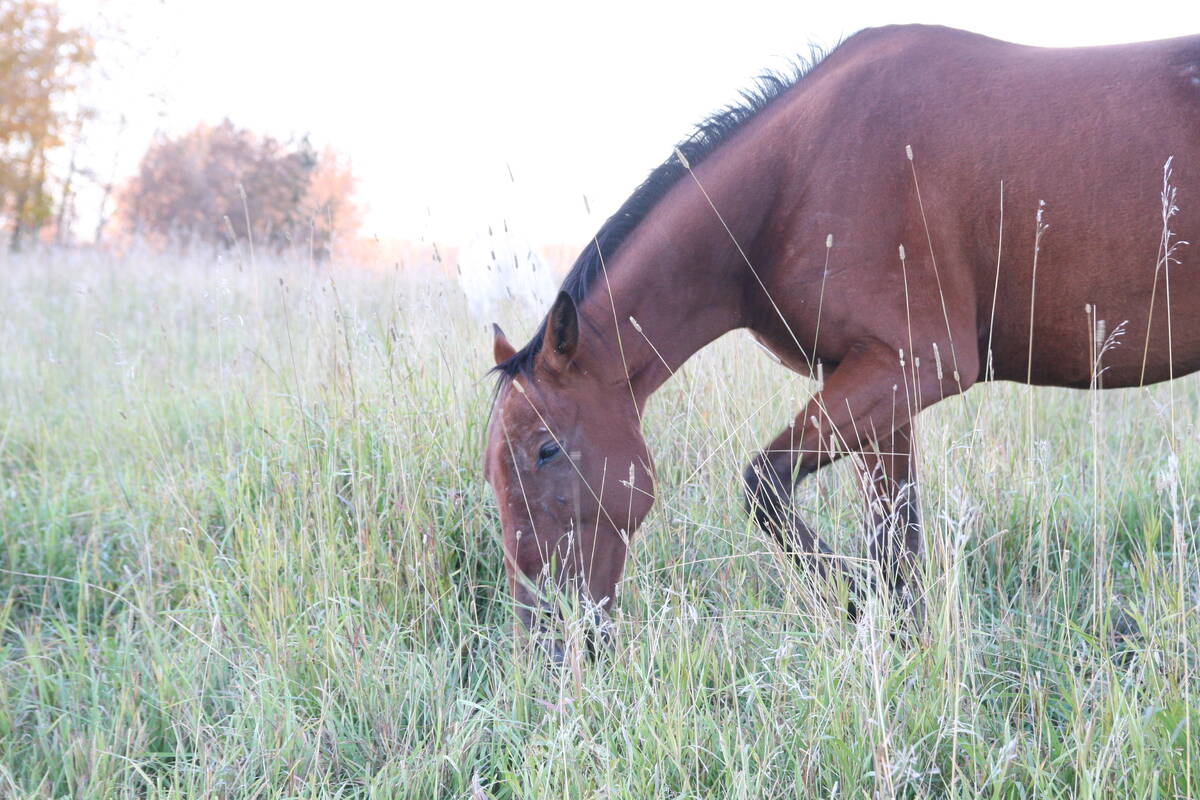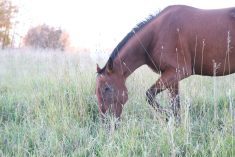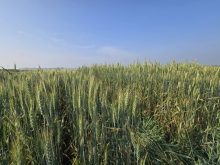Hundreds of Alberta producers have completed climate mitigation projects on their farms and the administrator of the On-Farm Climate Action Fund is expecting another wave of applications when the program reopens in February.
“We’re swamped but that’s good,” said Fiona Briody, program manager for RDAR (Results Driven Agriculture Research), which is administering the bulk of Alberta’s chunk of the $200-million federal program.
By the time the first application window closed on Nov. 7, Alberta producers had submitted more than 700 applications.
Read Also

Beware giving horses too much iron
Horses consuming too much iron through diet or well water risk health problems like laminitis. Mineral testing forage and water is good practice for owners.
“There was a lot of good interest and a lot of last-minute applications,” said Briody.
Ottawa created the On-Farm Climate Action Fund to promote practices that lower greenhouse gas emissions and store carbon. The program will cover 85 per cent of project implementation costs, up to $75,000 per farm. RDAR, the provincial agency for ag research funding, will be handing out $33 million of that money.
Applications came from across the province in all three categories: nitrogen management, rotational grazing and cover crops.
“It was a little bit slower on the cover crops because when you get later (in the season), you can’t seed it,” said Briody. “It was a push at the beginning of the program.”

Establishing a cover crop in the short window after harvest is a challenge on the Prairies, but there was considerable interest in irrigation districts, where wind erosion can be a major issue if the ground is left bare. The ability of cover crops to improve soil health has also intrigued farmers across Alberta.
“People are trying different cover crops across the province, whether that be in a cocktail mix so they can graze longer, or just something that extends their season and puts in a protection for their soils,” said Briody. “There’s quite a lot of interest.”
[RELATED] Cover cropping program looks to encourage innovation
For nitrogen management, many applications were for soil sampling and soil mapping. Many producers want to increase the number of tests, with more sampling at different depths. There were also many requests for funding to cover the cost of custom application of manure.
On the rotational grazing side, many producers are installing new watering systems and fencing.
Briody said she and her staff have met many applicants and also took two Agriculture Canada program managers on a full-day tour of participating farms in central Alberta.
The next application round will open Feb. 13 and Briody said there a few things producers should bear in mind.
One is not to jump the gun by starting a project before the application is approved.
“As more and more people become aware of the program, I think the demand will increase,” she said. “I don’t want producers to assume that if they went ahead with the activity, that we would have the funds to support that.”
The number of applications was likely restricted this year because time lines were tight. The application window opened Aug. 4 and projects have to be done and invoices submitted by Jan. 6. But with the program running for a full year in 2023, there’s a bigger chance that the funds could run out, said Briody.
She recommends that producers line up a professional agrologist (it’s mandatory to have one review and sign off on a project), use the application template (available at www.rdar.ca) and be ready to go on Feb. 13.
“I think the demand at the beginning will be quite large for people getting ready,” she said. “So I would say if you could get your application in and do your planning and find your P.Ag beforehand, that would be a good time to do it.”
[RELATED] Ottawa’s focus on green programs a concern for some farm groups
There are a few small changes to the second round of the program. ESN smart nitrogen is now an eligible item but there is a $4,800 cap.
And even though applications are expected to increase, RDAR is planning to boost its promotion of the program.
“There will be more field days and demonstrations with associations,” said Briody. “We’ll have a (whole) growing season to do that. You’ll see more field activities and more activities where people can get out and about outside of watching a webinar.
“I think that will be a big change from last year. We just didn’t have the time to implement it (in year one).”
Producers will have opportunities to talk to farmers who have completed projects, see completed projects and have discussions in the field, she added.
“I’m excited about that. Hopefully we will get the approvals done and know exactly what they (producers) can do for the year and have more time to implement. That’s always a good thing.”
The On-Farm Climate Action Fund section of RDAR’s website has a number of resources, including a program guide, recordings of webinars on the program, FAQs, and its online application portal, which applicants must use. There’s a link to the system, called ARGO, on the website. Click on the Apply For Funding tab in the upper right corner.
Two other organizations are also taking applications from producers in Alberta but each only deals with one part of the program. The Canadian Forage and Grassland Association is dealing with rotational grazing applications in four provinces while the Canola Council of Canada will distribute $22 million for nutrient management projects in the three Prairie provinces.
















